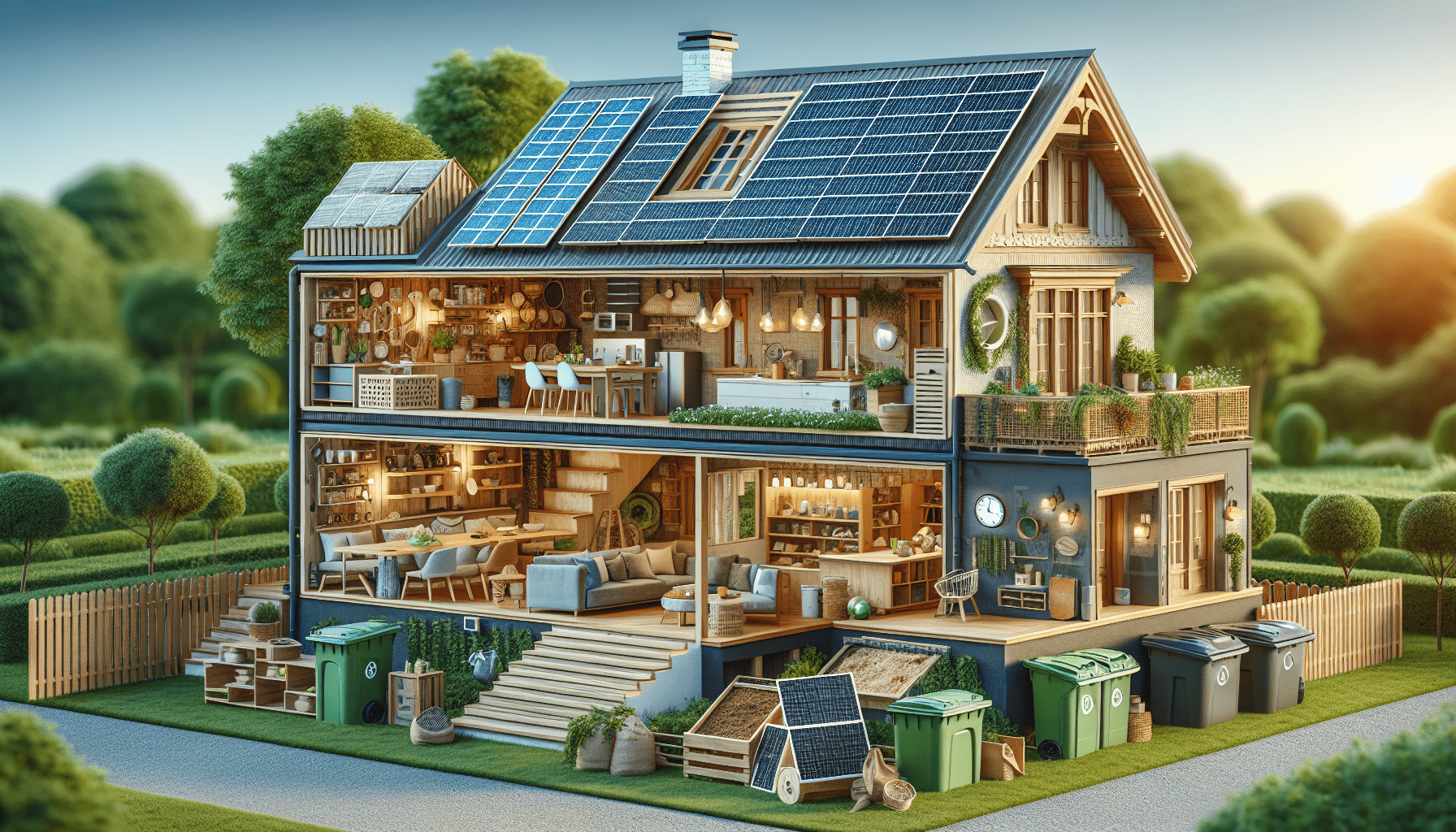Are you looking to renovate your home but also want to make it more sustainable and environmentally friendly? Look no further! In this article, you will discover a range of practical tips and ideas to help you transform your home into a sustainable haven. From choosing eco-friendly materials to implementing energy-efficient solutions, we have got you covered. Get ready to embark on a journey towards a greener and more sustainable home renovation project.
Eco-friendly Materials
Choose sustainable building materials
When renovating your home, it’s important to prioritize sustainable building materials. These materials are designed to have a minimal impact on the environment throughout their lifecycle. Look for options like reclaimed wood, bamboo flooring, and recycled glass tiles. These materials not only reduce the demand for new resources but also add a unique aesthetic to your home.
Opt for low VOC paints
Traditional paints release harmful volatile organic compounds (VOCs) into the air, which can contribute to poor indoor air quality and health issues. By choosing low VOC paints, you can eliminate or significantly reduce the amount of harmful chemicals released into your home’s environment. Look for paints that are labeled as zero-VOC or low-VOC to ensure you’re making an eco-friendly choice.
Install energy-efficient lighting
Switching to energy-efficient lighting options is an excellent way to reduce your home’s energy consumption. Replace traditional incandescent bulbs with LED or CFL bulbs, which use significantly less energy and last much longer. Additionally, consider installing motion sensor lights in areas that aren’t frequently used to further conserve energy. This simple step can make a big difference in reducing your energy bills while protecting the environment.
Energy Conservation
Insulate your home
Proper home insulation is essential for retaining heat during the winter and cool air during the summer. By insulating your home, you can significantly reduce your heating and cooling expenses while minimizing the need for excessive energy consumption. Insulation options include spray foam, cellulose, and fiberglass, which can be installed in walls, attics, and floors.
Upgrade to energy-efficient windows
Windows are notorious for allowing cold air in and warm air out, leading to energy waste and discomfort. By upgrading to energy-efficient windows, you can improve insulation and reduce the need for excessive heating and cooling. Look for windows with a high energy efficiency rating, such as those with double or triple glazing, low emissivity coatings, and gas fills between panes.
Install a programmable thermostat
A programmable thermostat allows you to set specific temperature schedules based on your lifestyle, ensuring that your home is comfortable when you need it and saving energy when you don’t. By using a programmable thermostat, you can optimize your heating and cooling systems’ efficiency, resulting in lower energy consumption and reduced utility bills.
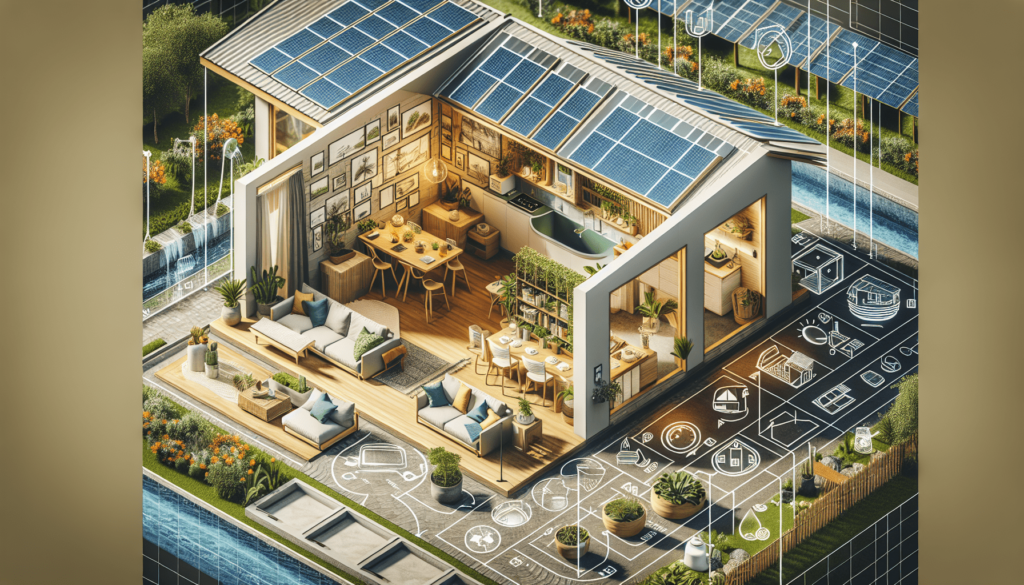
Water Conservation
Install low-flow fixtures
A simple and effective way to conserve water is by installing low-flow fixtures in your home. Low-flow faucets, showerheads, and toilets significantly reduce water usage without compromising performance. These fixtures use innovative designs to maintain adequate water pressure while reducing water flow. By making this switch, you can save both water and money.
Opt for water-saving appliances
Another way to conserve water is by choosing water-saving appliances for your home. Appliances like washing machines and dishwashers with high water efficiency ratings use less water per cycle, ultimately reducing your overall water consumption. Look for appliances that are labeled with the WaterSense logo, which indicates that they meet strict water efficiency standards.
Collect rainwater for irrigation
Utilize rainwater by installing a rainwater harvesting system. This system collects rainwater from your roof and directs it to a storage tank for future use. You can then use this collected rainwater for tasks such as watering your garden or landscaping, reducing the need to use treated tap water. Rainwater harvesting is a cost-effective and eco-friendly way to conserve water.
Waste Reduction
Donate or recycle old materials
During a renovation project, it’s common to replace and discard old materials. Instead of sending them to the landfill, consider donating or recycling them. Many organizations accept construction materials like cabinets, countertops, and appliances, which can be repurposed and reused in other projects. Additionally, recycling materials like wood, metal, and glass helps reduce the demand for new resources and minimizes waste.
Repurpose existing furniture
Rather than buying new furniture, consider repurposing and updating your existing pieces. With a little creativity and some DIY skills, you can transform old furniture into something new and unique. Give old wooden chairs a fresh coat of eco-friendly paint, reupholster a worn-out couch with organic fabric, or turn an old dresser into a stylish storage unit. Not only will you save money, but you’ll also contribute to a more sustainable home.
Use reclaimed wood for projects
Reclaimed wood is a fantastic option for adding character and sustainability to your home. It’s salvaged from old structures and repurposed into new projects like flooring, furniture, or accent walls. By using reclaimed wood, you give new life to materials that would otherwise be wasted and reduce the need for harvesting new trees. Plus, the unique patina and history of reclaimed wood add a charming element to your home’s design.
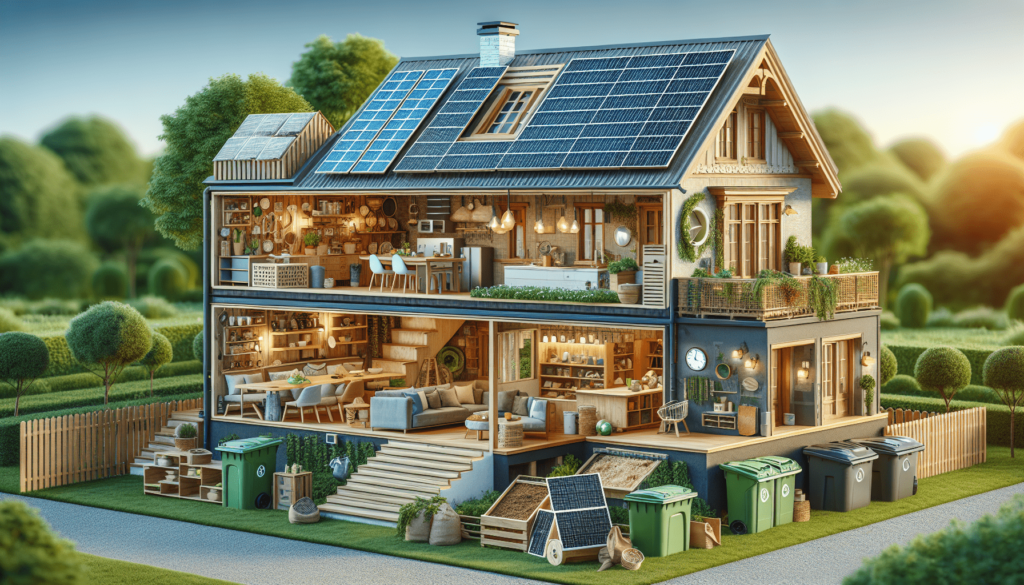
Indoor Air Quality
Use natural cleaning products
Many conventional cleaning products contain harsh chemicals that can negatively impact indoor air quality. Opt for natural and eco-friendly alternatives, such as vinegar, baking soda, and hydrogen peroxide. These household staples are effective in cleaning and disinfecting while being gentle on both your health and the environment. You can also choose cleaning products labeled as “green” or “eco-friendly” that are made from plant-based ingredients.
Plant indoor air-purifying plants
Certain indoor plants have the ability to remove pollutants from the air, improving indoor air quality. Some popular air-purifying plants include spider plants, peace lilies, and snake plants. These plants naturally filter toxins and release oxygen, creating a healthier living environment. Incorporating these plants into your home not only enhances aesthetics but also contributes to your overall well-being.
Improve ventilation
Good ventilation is crucial for maintaining optimal indoor air quality. Ensure that your home has proper airflow through the use of exhaust fans in bathrooms and kitchen areas. Additionally, opening windows regularly allows fresh air to circulate, reducing the buildup of pollutants. Proper ventilation helps remove indoor pollutants such as volatile organic compounds (VOCs), mold, and allergens, leading to a healthier and more comfortable living space.
Renewable Energy
Consider solar panel installation
Solar panels are a popular and effective way to generate clean and renewable energy for your home. By harnessing the power of sunlight, solar panels can produce electricity that can be used to power your appliances, heating, cooling, and lighting. Investing in solar panels not only helps reduce your reliance on fossil fuels but also allows you to lower your energy bills and reduce your carbon footprint.
Explore wind energy options
Depending on your location and property, wind energy may be a viable option for renewable energy. Wind turbines harness the power of wind to generate electricity, which can be used to supplement or completely replace your energy needs. Before considering wind energy, it’s essential to assess factors such as wind speed and regulations in your area. Consult with professionals to determine if wind energy is a suitable choice for your home.
Invest in geothermal heating and cooling
Geothermal energy utilizes the constant temperature of the earth to heat and cool your home. By installing a geothermal heat pump, you can tap into the earth’s natural energy and achieve greater energy efficiency. This system uses pipes buried underground to transfer heat from the earth to your home during winter and remove heat during summer. Geothermal heating and cooling offer long-term cost savings and a reduced environmental impact.
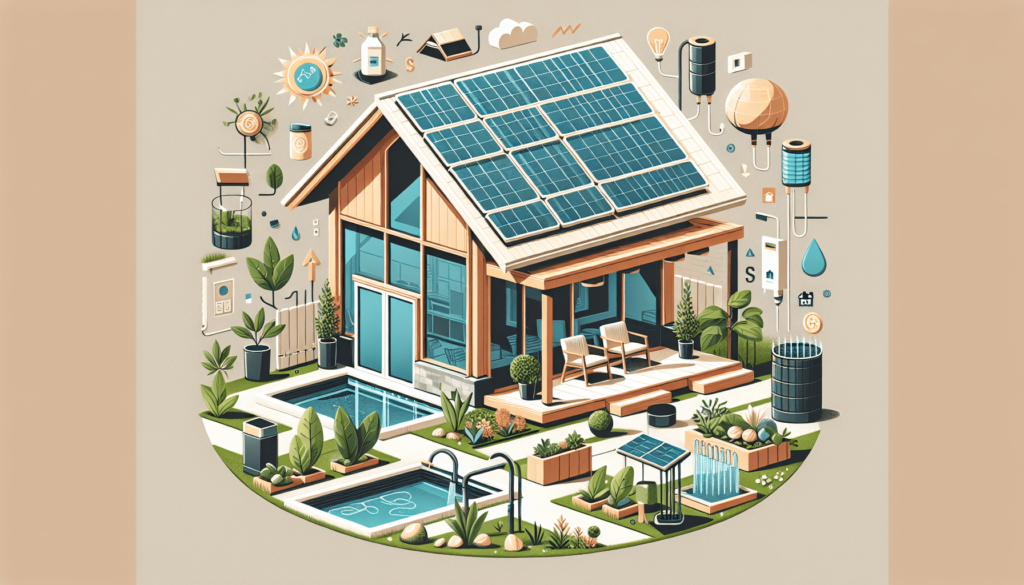
Smart Home Technology
Install smart thermostats and lighting controls
Smart thermostats and lighting controls allow you to easily manage and optimize your home’s energy usage. These devices enable you to remotely control and schedule your heating, cooling, and lighting systems. By using sensors and advanced algorithms, smart technology automatically adjusts settings based on your preferences and occupancy patterns, resulting in energy savings and increased convenience.
Use smart sensors for energy management
Smart sensors play a crucial role in monitoring and managing your home’s energy consumption. These sensors can detect movement, occupancy, and light intensity, providing valuable data to optimize energy usage. For example, motion sensors can turn off lights in unoccupied rooms automatically, preventing unnecessary energy waste. By integrating smart sensors into your home, you can enhance energy efficiency and reduce costs.
Monitor energy consumption with a smart home hub
Smart home hubs act as a central control point for all connected devices in your home. With a smart hub, you can monitor your energy consumption in real-time, identify areas of energy waste, and make informed decisions to reduce your overall energy footprint. By understanding how your home consumes energy, you can take appropriate steps to further optimize efficiency and conservation.
Green Roof and Walls
Install a green roof for insulation and rainwater absorption
A green roof is a living roof that consists of vegetation planted on the roof’s surface. It provides insulation, absorbs rainwater, and reduces stormwater runoff. Green roofs can help regulate indoor temperatures, reduce energy needs for heating and cooling, and enhance the aesthetic appeal of your home. Additionally, they contribute to reducing urban heat island effects, improving air quality, and providing habitats for birds and insects.
Create vertical gardens for improved air quality
Vertical gardens, also known as living walls, are a creative way to incorporate nature into your home’s design. These structures consist of plants grown vertically on a wall or in a freestanding structure. In addition to their aesthetic appeal, vertical gardens improve air quality by reducing indoor pollutants and increasing oxygen levels. They also act as natural insulation, helping to regulate temperature and humidity.
Utilize living walls for aesthetic and sustainability benefits
Living walls are similar to vertical gardens but are typically designed as standalone installations. They can be integrated into the interior or exterior of your home, adding a touch of greenery and creating a tranquil atmosphere. Living walls are not only visually appealing but also offer sustainability benefits. They contribute to reducing the urban heat island effect, absorbing carbon dioxide, and improving overall air quality.
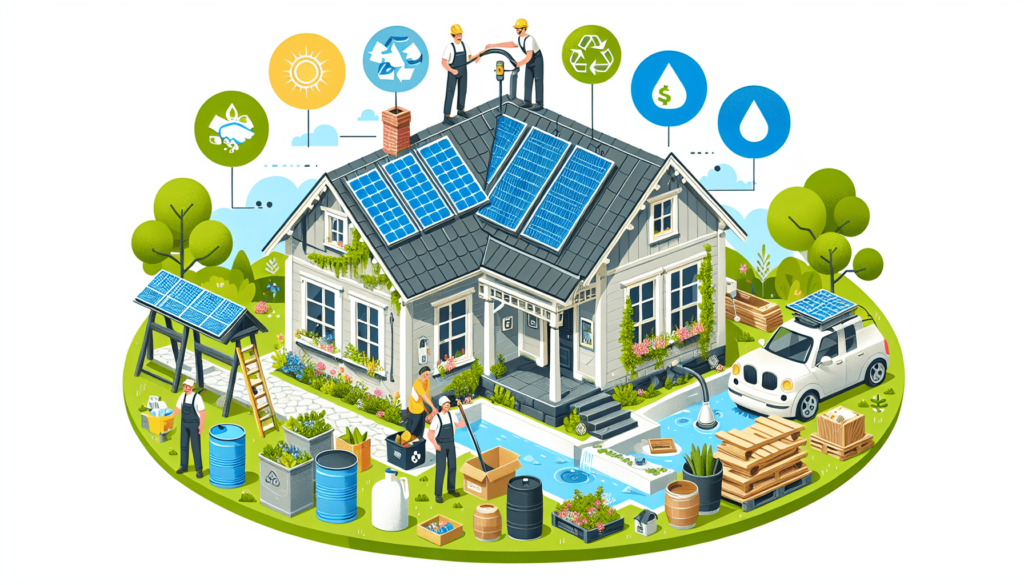
Passive Design Techniques
Optimize natural lighting with skylights and large windows
Utilizing natural lighting is key to reducing energy consumption and maximizing comfort in your home. Skylights and large windows allow ample daylight to enter your living spaces, reducing the need for artificial lighting during the day. Opt for energy-efficient windows with low emissivity coatings to minimize heat loss or gain. By incorporating these passive design elements, you can create a bright and energy-efficient living environment.
Design for proper airflow and cross ventilation
Proper airflow and cross ventilation are essential for maintaining a comfortable and healthy indoor environment. When renovating your home, consider design elements that promote natural airflow, such as strategically placed windows, vents, or operable skylights. This allows for efficient exchange of fresh air while reducing the need for mechanical ventilation systems. Good airflow also helps regulate indoor temperature and minimize the occurrence of mold and mildew.
Utilize shading techniques for energy efficiency
Shading is an effective technique to control solar heat gain and reduce cooling needs. Incorporate elements like shade trees, overhangs, pergolas, or awnings to block direct sunlight from entering your home during the hottest parts of the day. This helps maintain a comfortable indoor temperature, reduces reliance on air conditioning, and lowers energy consumption. Incorporating shading strategies into your renovation plans can have a significant impact on energy efficiency.
Home Automation Systems
Integrate smart home automation systems for efficient energy usage
Home automation systems offer a range of features to optimize energy usage and increase convenience. By integrating various devices and systems into a centralized hub, you can control and automate lighting, heating, cooling, and other home functions. With smart automation, you can create custom schedules, set energy-saving modes, and receive real-time data on your energy consumption, allowing you to make informed decisions to reduce waste and save energy.
Control lighting, heating, and cooling remotely
With home automation, you can have remote control over your lighting, heating, and cooling systems. This means you can turn off lights or adjust the thermostat while you’re away from home, avoiding unnecessary energy consumption. Remote control also allows you to create a welcoming atmosphere by turning on lights and adjusting the temperature before you arrive. Smart home automation provides convenient and energy-efficient control over your home’s systems.
Automate energy management based on occupancy
Home automation systems can be programmed to detect occupancy and adjust energy usage accordingly. For example, lights and appliances can automatically turn off when no one is in the room, reducing electricity waste. Additionally, heating and cooling systems can adapt based on occupancy patterns, optimizing energy consumption and reducing utility bills. Automating energy management ensures that you’re only using energy when and where it’s needed, promoting sustainability and cost-effectiveness.
In conclusion, sustainable home renovation involves making conscious choices that prioritize eco-friendly materials, energy conservation, water conservation, waste reduction, indoor air quality, renewable energy, smart home technology, green roofs and walls, passive design techniques, and home automation systems. By implementing these sustainable practices, you can create a more efficient, comfortable, and eco-friendly home for yourself and future generations. Remember, every small step counts in reducing your environmental footprint and promoting a healthier planet.

